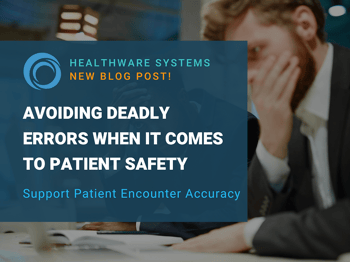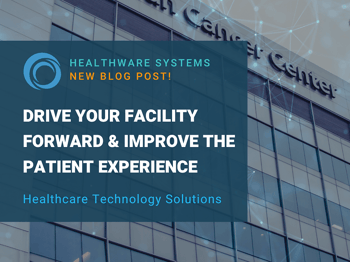Reducing Bad Debt & Avoiding Denials
Revenue Cycle Management
Posted on Wed, Nov 09, 2016
Insured patients now bear more financial responsibility than they have in the past, and hospitals will need to keep this in mind when it comes to finding healthcare solutions for revenue cycle management, reducing bad debt, and avoiding denials.
National Center for Health Statistics, of those with private health insurance, the percentage of people below age 65 with high-deductible health plans has increased from 25.3% in 2010 to 38.8% as of June 2016. With the higher out-of-pocket costs of these plans, fewer patients are paying their co-payments and deductibles in full, leading to more bad debt for hospitals left with unpaid or underpaid bills.
Fortunately, there are healthcare solutions that can help hospitals better manage both self-pay and insured patient accounts. Below are some areas in which technology can play a key role in revenue cycle management:
Pre-Arrival Solutions
It is not enough simply to pre-register a patient; you must ensure that all patients are clinically and financially cleared before they even arrive.
This process is vital to revenue cycle management and in order to complete it, healthcare workers in many facilities must bounce between multiple electronic and paper-based systems. Not only is this inefficient, as these various systems must be checked and rechecked throughout the process to ensure all appropriate steps have been taken for every patient encounter, but also leaves too much room for error.
You can streamline the pre-arrival process by utilizing technology that captures all documentation (such as pre-authorizations, medical necessity, ABNs, insurance eligibility, and patient estimates) in a single repository, regardless of data source, and deficiency management tools that ensure all documentation is complete and accurate before the patient presents.
Error Prevention
Deficiency management is of the utmost importance when it comes to pre-arrival. Completing the pre-arrival steps is futile if errors or incomplete data ultimately result in reimbursement denials and rework for staff down the road.
Technology like ActiveDEFENDER assists registrars with patient encounter accuracy and proactively prevents errors and fraud before these issues can snowball into problems that affect later stages in the encounter. And HealthWare’s Coverage Finder will search the top regional payers to find potential coverage a patient may have failed to report.
Providing your staff with effective pre-arrival solutions can help them efficiently use the time prior to patient arrival to accurately gather all required information, which in turn will eliminate many of the back end surprises that affect payment delays, denials, underpayments, and bad debt.
Financial Assistance Screening
You can more effectively manage your self-pay patients’ accounts with financial assistance screening technology, like ActiveASSIST, which ensures the provider is payer of last resort by exhausting all other options first. This system identifies the alternative funding sources a patient is most likely to qualify for and facilitates the application process.
Many patients don’t know financial assistance programs may be available to them. By informing potentially eligible patients and helping them complete applications for multiple charity programs simultaneously, not only will you secure additional funds toward the payments you’re owed, but you will also gain your patients’ trust and appreciation as you work as an advocate on their behalf.
Workflow Automation
At some point, your facility may turn over a delinquent account to a third-party collections agency rather than continue wasting resources chasing down a patient and risk receiving no percentage of the balance owed at all. However, according to the Consumer Financial Protection Bureau, only 7.4% of medical collections are reported as settled (whether in full or for only part of the balance due). Plus, once the agency takes its commission from accounts it is able to settle, your hospital is left with only a fraction of the percentage collected.
Automating the monitoring of your accounts can prevent them from getting to this point and help you avoid sending unpaid bills to a collections agency.
For example, ActiveDEFENDER continuously monitors each patient encounter and flags deficiencies, routes them to staff for resolution, and escalates them to management if they are not resolved within an expected time frame.
ActiveASSIST monitors specific documentation requirements for each assistance program and escalates accounts that are not progressing at an acceptable pace, and flags deficiencies and assigns them to associates for resolution.
The time it takes to complete applications and other forms, follow-up with patients, and complete rework related to technical denials is a needless contributor to bad debt. Automating your workflow can reduce the time it takes to accomplish these tasks, and even eliminate the need for some of them. By using technology for deficiency management and to monitor requirements, your facility can ensure that accounts don’t age unnecessarily due to neglect or ignorance and that collections remain under your own control.
Hospitals wishing to improve their revenue cycle management will need to focus on verifying that scheduled care is authorized by payers before care is administered, and that the care is documented and processed appropriately for reimbursement. Technological healthcare solutions can aid you in the above areas and help you reach your goal of reducing bad debt and avoiding denials.

